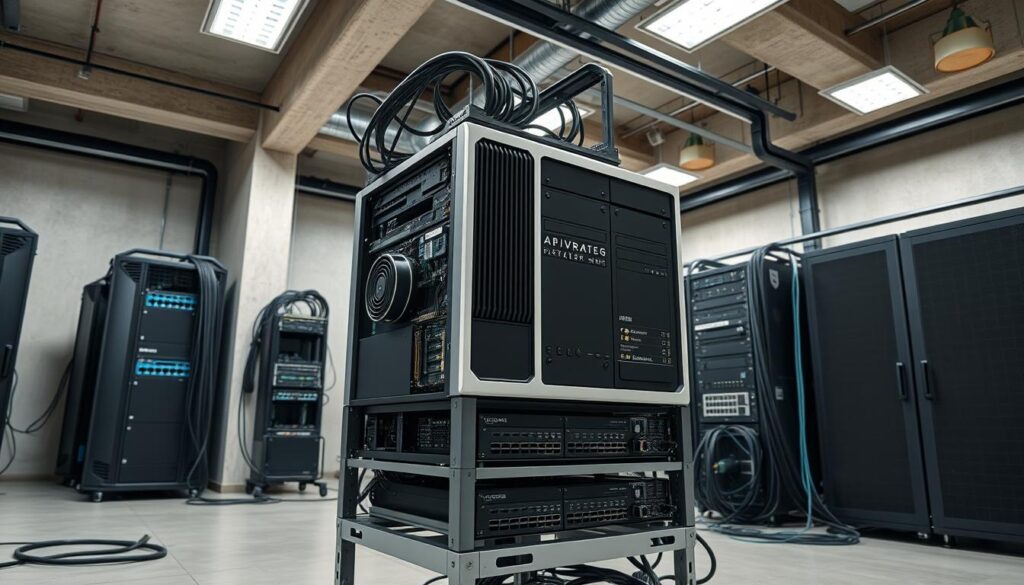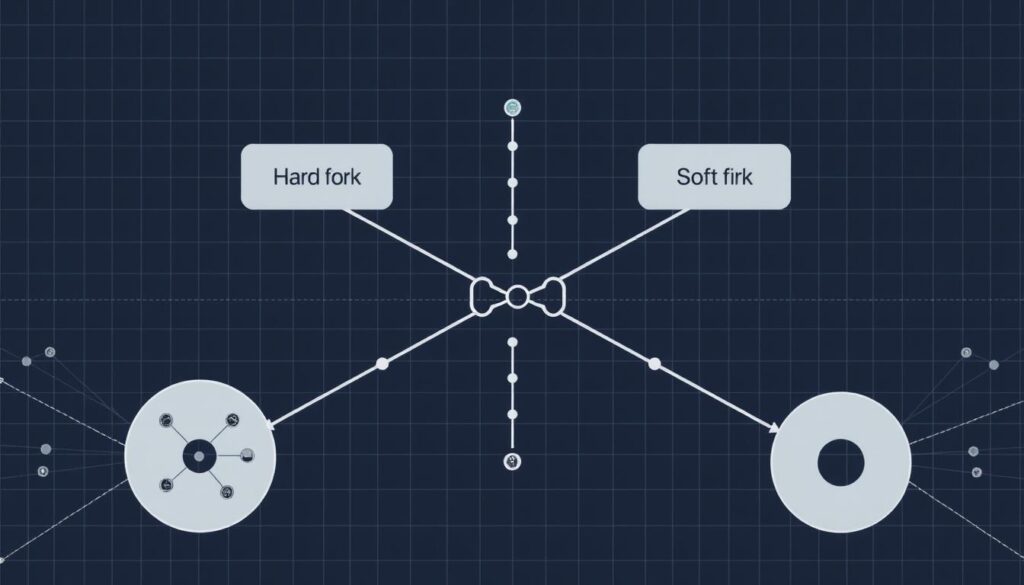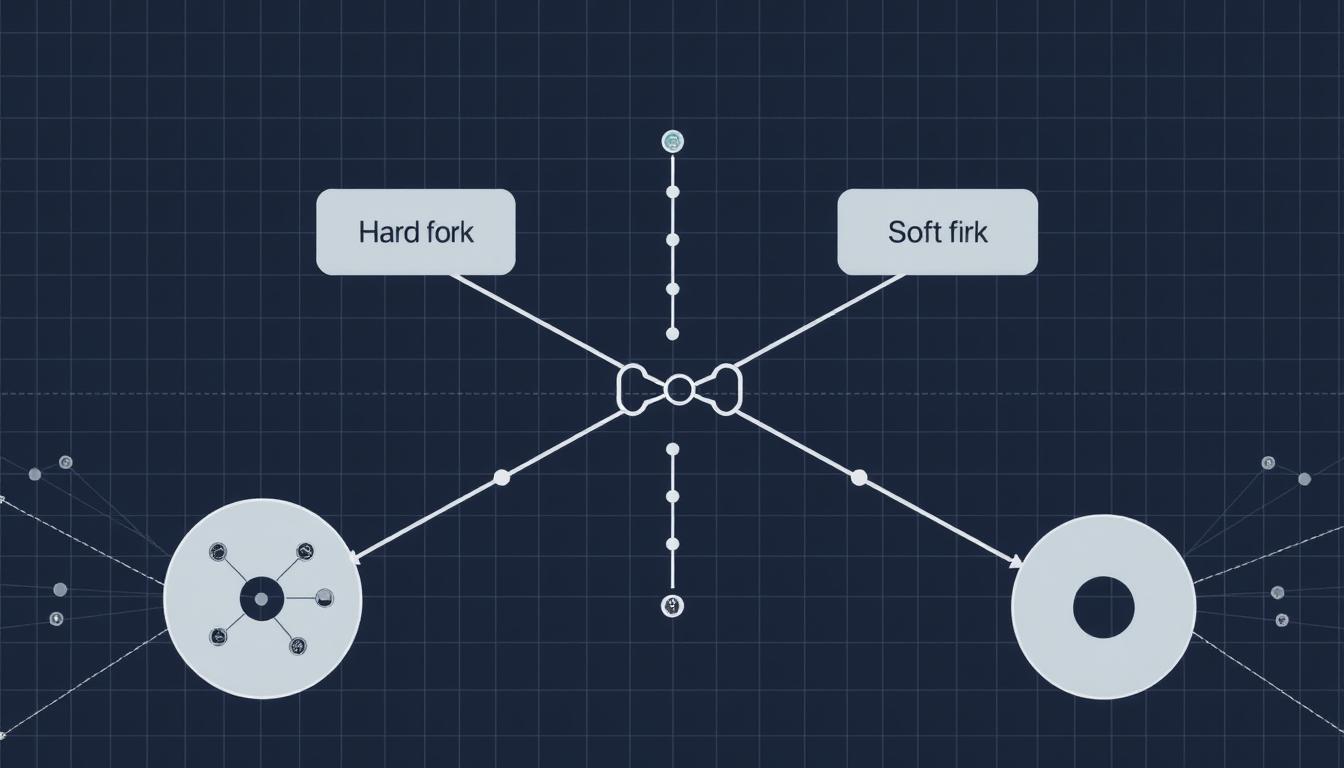Now Reading: Blockchain Node Validation Network Security Explained
- 01
Blockchain Node Validation Network Security Explained
Blockchain Node Validation Network Security Explained

Digital ledgers rely on special computers to function properly. These machines, known as validator nodes, are the backbone of the entire system. They work together to check transactions and create new blocks of data.
This process keeps the system honest and trustworthy. The health of this entire operation depends on these participants. Their consistent performance is crucial for smooth operation.
If one of these machines fails or acts dishonestly, there are real consequences. The operator can face financial penalties, lose rewards, or even be removed from the group. This creates a strong incentive to follow the rules and maintain reliable service.
As these digital systems grow and handle more valuable applications, protecting these critical machines becomes increasingly important. This involves multiple layers of protection, from physical hardware safety to advanced digital key management.
Key Takeaways
- Validator nodes are essential computers that verify transactions and maintain the integrity of digital ledger systems.
- These systems use economic incentives to encourage proper behavior from node operators.
- Performance issues or downtime can result in financial penalties for the operator.
- The security of these nodes is a multi-layered challenge involving hardware, software, and network protections.
- As the technology evolves, robust security practices for validators become more critical.
- Proper setup and maintenance are required to protect staked assets and ensure network reliability.
Understanding Blockchain node validation network security
Today’s decentralized platforms require specific infrastructure components to ensure proper functioning. These specialized participants form the backbone of modern distributed systems.
Definition and Scope of Validator Nodes
Validator nodes operate under Proof of Stake consensus mechanisms. They differ from traditional mining operations by using economic stake rather than computational competition.
These specialized computers require dedicated hardware with sufficient processing power and storage. They run specific software to participate effectively in the consensus process.
The primary role of these participants involves auditing transaction authenticity. They verify digital signatures and account balances before allowing transactions into blocks.
Importance of Network Security in Blockchain
The distributed nature of validator nodes creates system resilience. Each participant maintains a complete copy of the ledger data.
Practical security depends on collective behavior reaching agreement. Cryptographic fingerprints create tamper-evident records that break if altered.
While mathematical foundations provide strong guarantees, real-world protection relies on proper configuration. The integrity of each validator directly impacts overall system trustworthiness.
The Role of Validator Nodes in Blockchain Networks
Validator nodes constitute the working engine that powers modern distributed systems by processing and organizing transactions. These specialized participants handle two critical operations that maintain system reliability.

Transaction Validation and Block Creation Process
Each validator checks incoming transactions for legitimacy. They verify digital signatures and account balances. This ensures only proper transactions proceed.
The software then assembles verified transactions into new blocks. These blocks include timestamps and references to previous entries. This creates the continuous chain of records.
Ensuring Consensus and Integrity
Validators actively participate in agreement mechanisms. Systems like Ethereum’s beacon chain randomly select participants for block proposals. This creates fair distribution of responsibilities.
Continuous participation is mandatory for these operations. Missing assigned duties results in penalties. This incentivizes reliable performance from all participants.
| Function Type | Process | Outcome |
|---|---|---|
| Transaction Verification | Signature and balance checks | Valid transactions only |
| Block Assembly | Structuring verified transactions | New block creation |
| Consensus Participation | Network agreement mechanisms | Collective validation |
| System Maintenance | Continuous operation | Network reliability |
The collective work of these participants transforms individual actions into permanent records. Their dual responsibilities position them as central guardians of distributed systems.
Consensus Mechanisms: Strengthening Decentralization and Security
Modern decentralized systems achieve reliability through specialized coordination methods that ensure all participants follow the same rules. These agreement protocols form the backbone of trust in distributed platforms.

Different consensus mechanisms offer unique approaches to maintaining system integrity. Each method balances performance with protection.
Proof of Stake and Delegated Proof of Stake (DPoS)
Proof of Stake (PoS) systems select validators based on their economic investment. This approach reduces energy consumption significantly.
Delegated Proof of Stake (DPoS) allows token holders to vote for representatives. These elected validators handle block creation duties.
Both systems use economic incentives to encourage proper behavior. Validators risk financial penalties for dishonest actions.
Implementing Byzantine Fault Tolerance
Byzantine Fault Tolerance (BFT) protocols ensure agreement even when some participants malfunction. They require extensive communication between validators.
These systems provide strong finality guarantees for transactions. Once confirmed, blocks cannot be reversed easily.
BFT mechanisms excel in environments requiring fast confirmation times. They trade some decentralization for improved performance.
Each consensus method shapes how validators interact within their respective chains. The choice impacts overall system resilience and efficiency.
Setting Up and Managing Your Validator Node
Operating a validator requires careful planning and the right technical foundation. This involves selecting robust hardware, installing specific software, and following a precise activation process.
Proper setup ensures reliable performance and protects your staked assets.

Hardware and Software Requirements
A production-ready setup needs powerful components. The infrastructure must handle continuous data processing.
Key hardware includes a modern CPU, ample RAM, and fast SSD storage. Reliable internet and power are also critical.
| Component | Minimum Specification | Recommended Specification |
|---|---|---|
| Processor (CPU) | 4-core (Intel i5 / AMD Ryzen) | 8-core or better |
| Memory (RAM) | 16 GB | 32 GB |
| Storage (SSD) | 2 TB | 4 TB |
| Network Speed | 10 Mbps upload/download | 100 Mbps or faster |
The software stack involves three main parts. You need an execution client, a consensus client, and a validator client.
Staking Process and Validator Activation
Becoming an active participant starts with generating keys. Use official tools to create your validator credentials securely.
Next, fund the staking contract with the required amount of ETH. This action enters your validator into an activation queue.
After funding, configure and sync your client software. Once synchronized, import your keys to begin duties.
Performance Monitoring and Optimization
Continuous monitoring is essential for successful operations. Track uptime and participation rates closely.
Use dashboards and alerts to stay informed. Optimize by ensuring low-latency connectivity and using dedicated hardware.
This approach maximizes rewards and minimizes risks associated with downtime.
Best Practices for Blockchain Node Security
Protecting validator infrastructure requires a multi-layered approach that addresses both traditional and emerging threats. Operators must implement comprehensive defensive strategies to safeguard their systems and staked assets.

Implementing Protective Measures like Firewalls and Encryption
Basic protection begins with proper configuration management. Firewalls should restrict access to essential ports only.
Encryption protects sensitive data both during transmission and storage. TLS protocols secure communications between system components.
Web application firewalls add another layer of defense. They filter malicious requests before they reach critical software.
Mitigating DDoS, Malware, and Other Attack Vectors
Distributed Denial of Service attacks overwhelm systems with spam transactions. These can cause legitimate operations to stall.
Malware specifically targets cryptographic keys and transaction data. Regular antivirus scans and software updates provide essential protection.
Specialized threats like 51% attacks attempt to manipulate consensus. Proper monitoring and alert systems help detect unusual activity patterns.
Implementing these best practices creates a resilient security posture. Continuous vigilance and regular audits maintain protection over time.
Conclusion
The reliability of decentralized systems ultimately rests on the shoulders of their validator participants. These operators transform theoretical security properties into practical, trustworthy infrastructure that processes valuable transactions daily.
While cryptographic foundations provide strong guarantees, they require proper implementation through robust operations. Successful participants must balance technical expertise with comprehensive protective measures against diverse threats.
The economic dimension adds significant weight to these responsibilities. Proper setup and continuous monitoring directly impact both rewards and system health. This creates a powerful incentive for excellence.
As technology evolves, the landscape offers increasingly sophisticated options for deployment. The commitment to following established best practices remains essential for anyone contributing to these critical systems.
FAQ
What is a validator node?
A validator node is a special computer that actively participates in a distributed ledger system. Its main job is to check new transactions and help create new blocks. These operations are vital for keeping the entire system honest and running smoothly.
Why is security so critical for these networks?
Strong protection is essential because these systems are decentralized. If an attacker gains control of enough nodes, they could approve fake transactions or disrupt operations. Good security protocols defend the integrity of the data and the trust users place in the system.
How do consensus mechanisms like Proof of Stake (PoS) improve security?
Mechanisms such as PoS strengthen protection by requiring validators to stake their own assets. This creates a financial incentive to act honestly. If a validator tries to cheat the system, they risk losing their staked funds, making attacks very costly.
What are the key steps for running a validator node securely?
Key steps include using robust hardware, keeping your software updated, and using a firewall. It’s also crucial to protect your private keys with encryption and to monitor your node’s performance constantly to spot any unusual activity quickly.
What are common attack vectors against a node, and how can I mitigate them?
Common threats include DDoS attacks, which overwhelm your node with traffic, and malware designed to steal sensitive information like private keys. Mitigation involves using DDoS protection services, installing anti-malware software, and strictly controlling access to your infrastructure.
Can I run a validator node from a standard web application server?
Generally, no. Running a validator is a production-level task that demands dedicated resources, high availability, and specific security configurations. A typical web server environment usually doesn’t provide the necessary control or isolation for these critical operations.
















